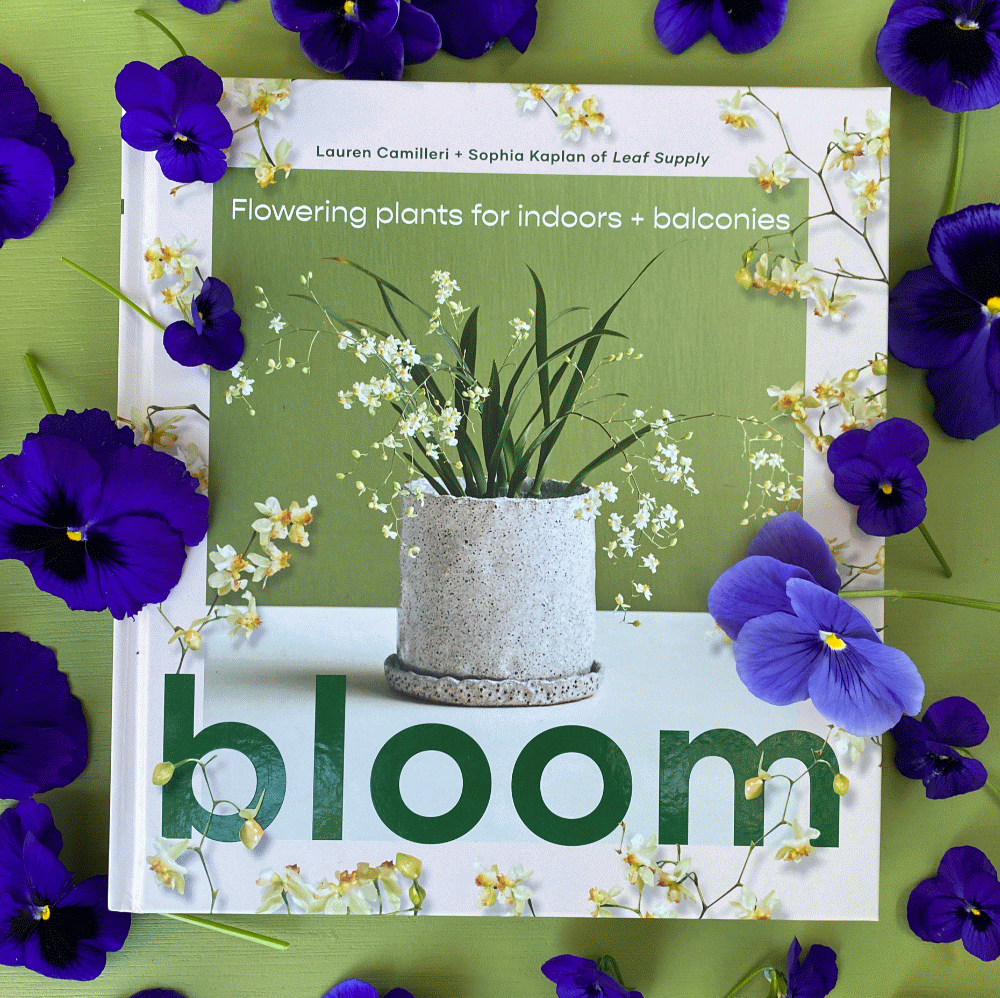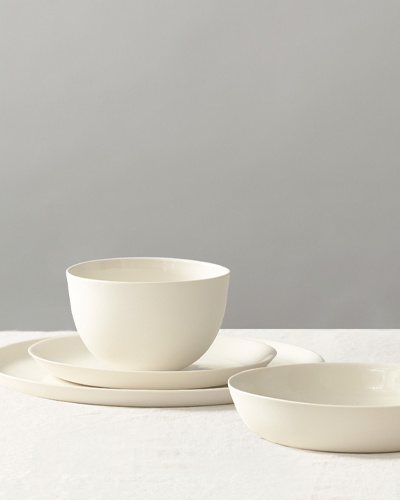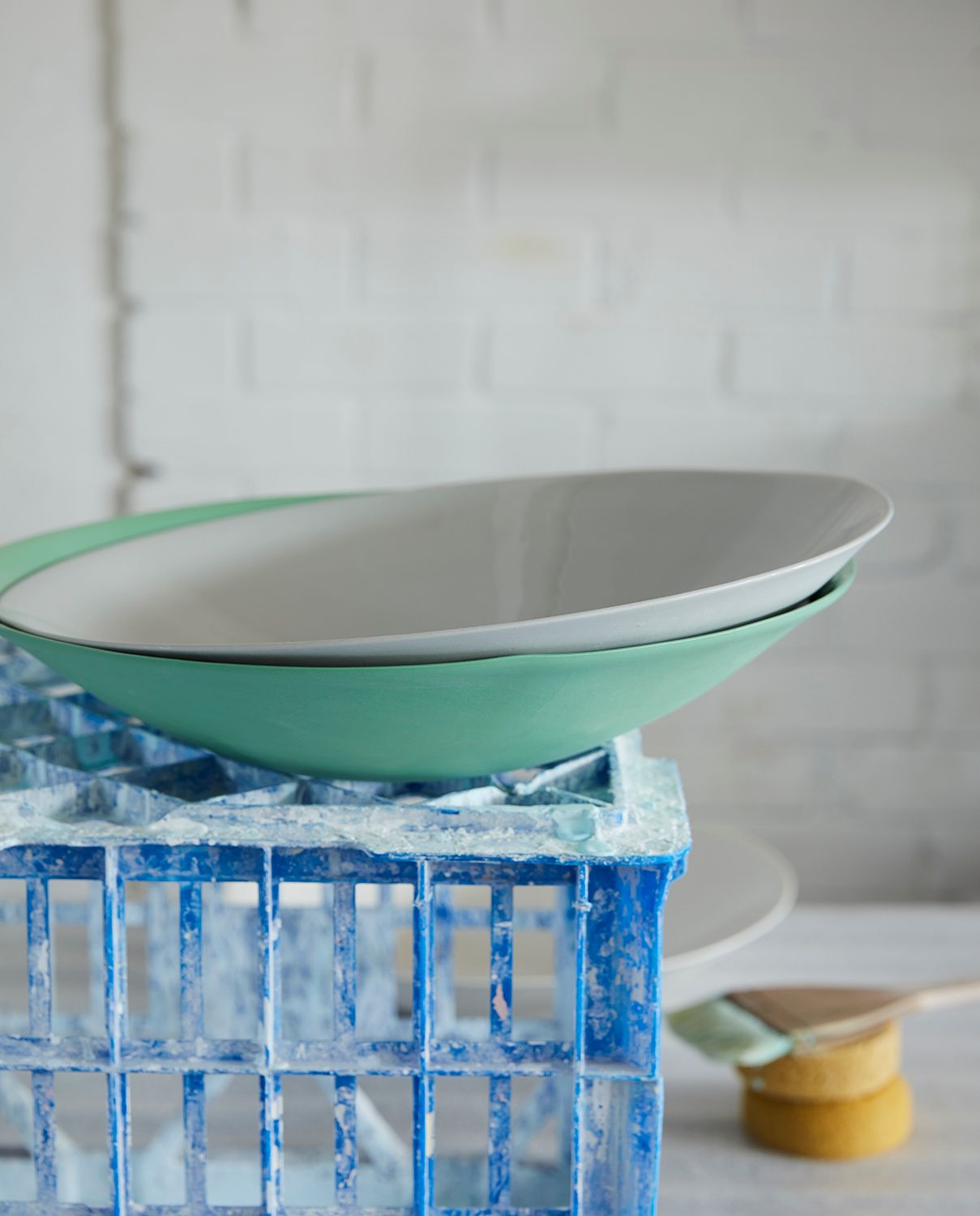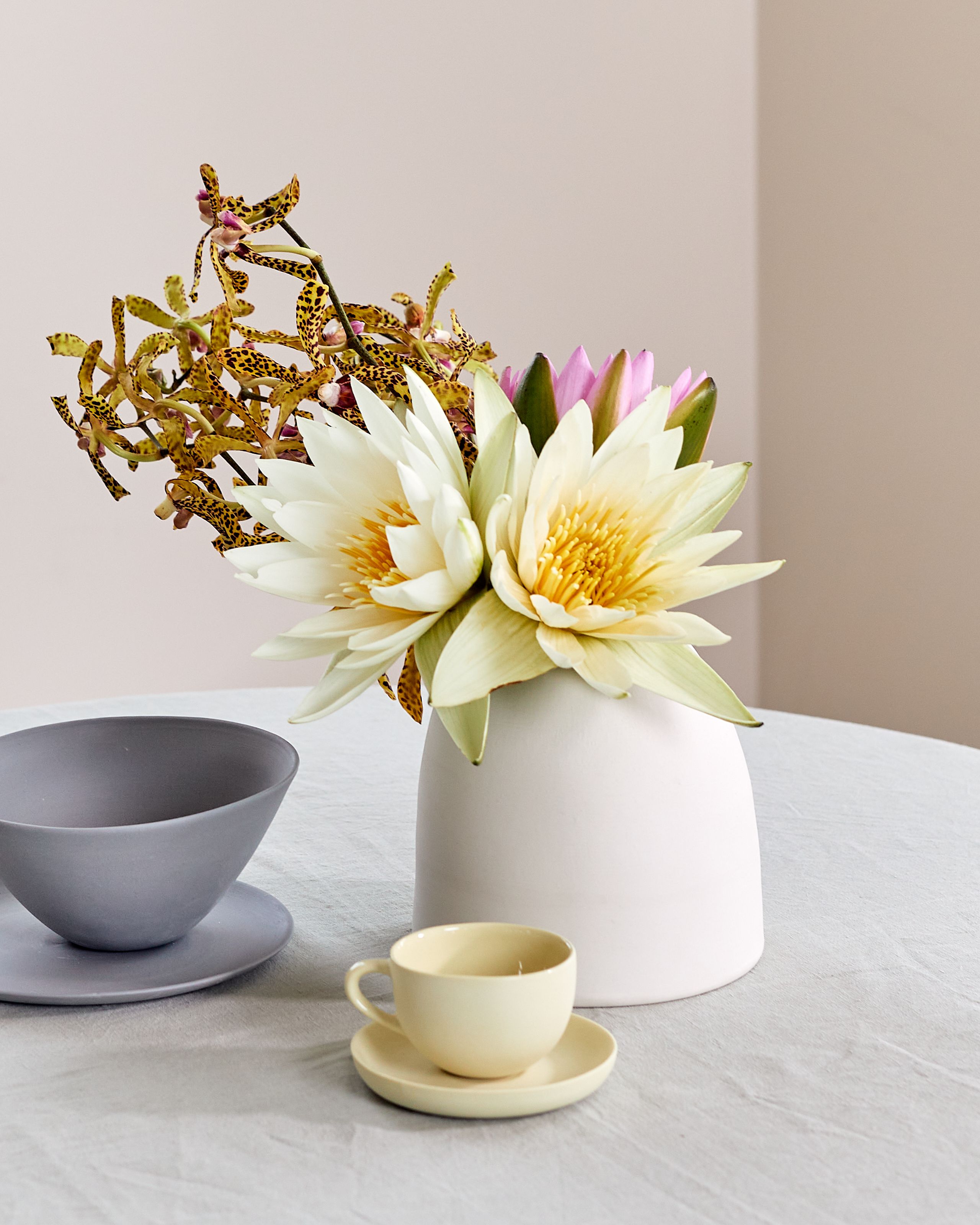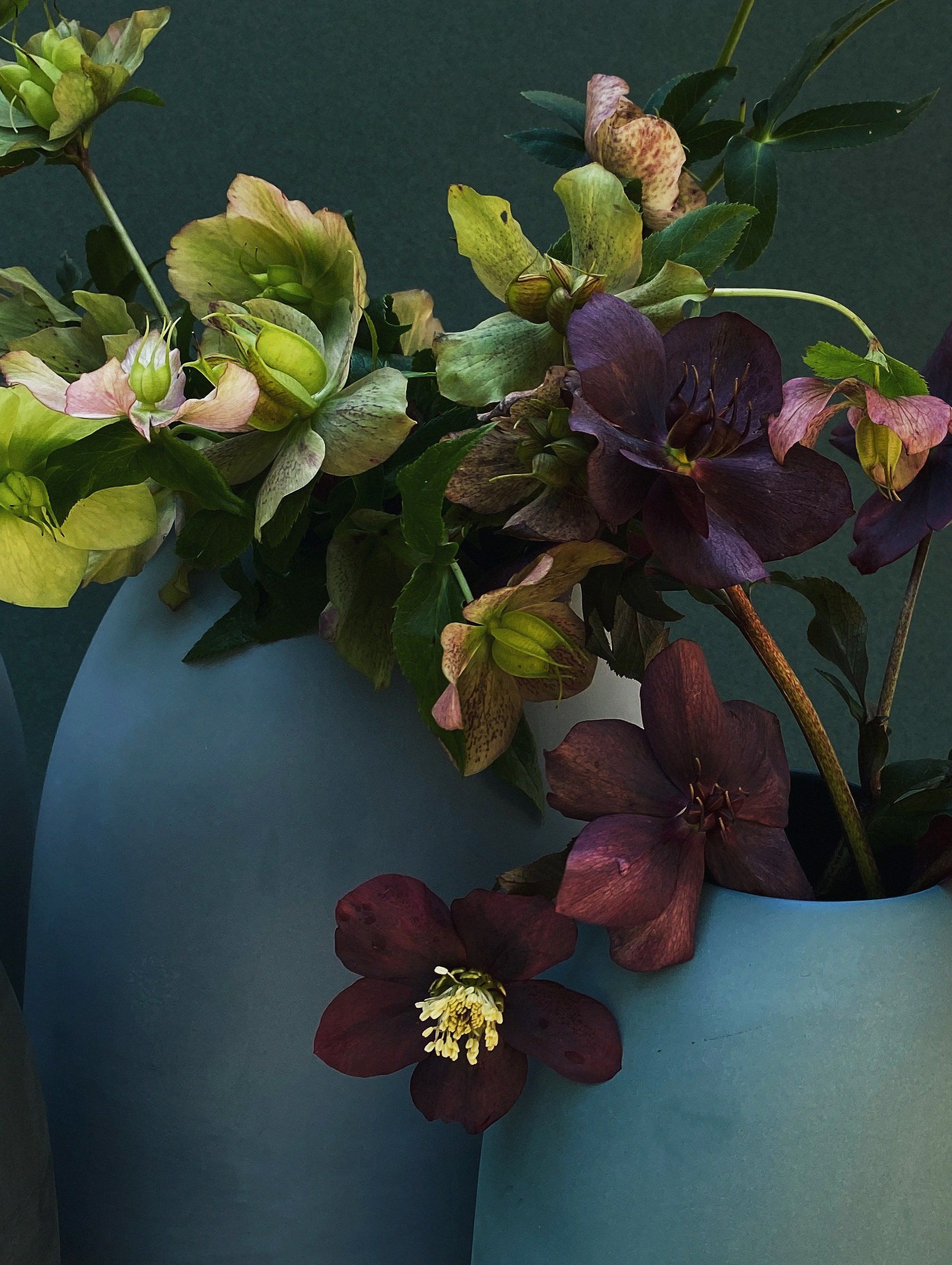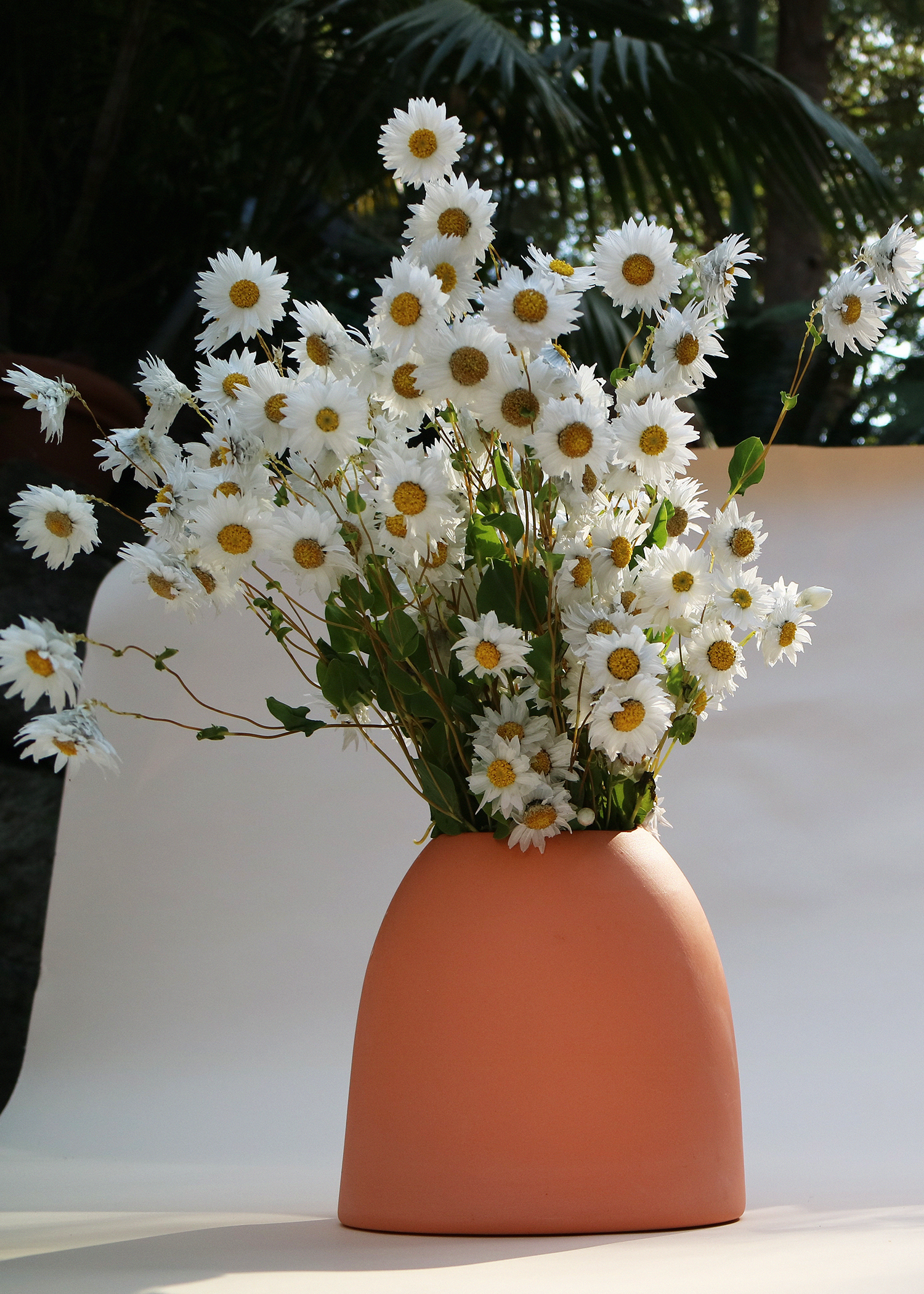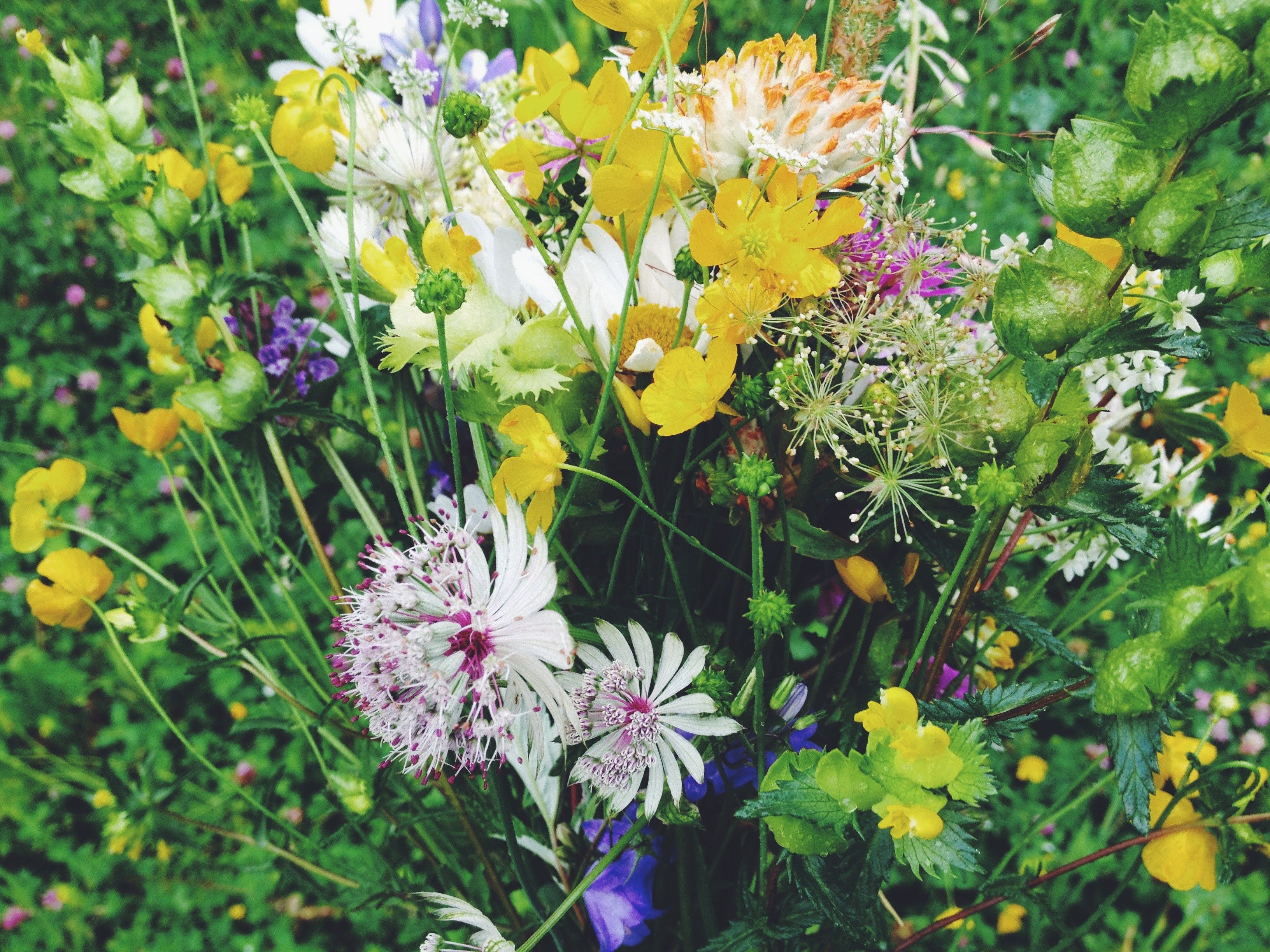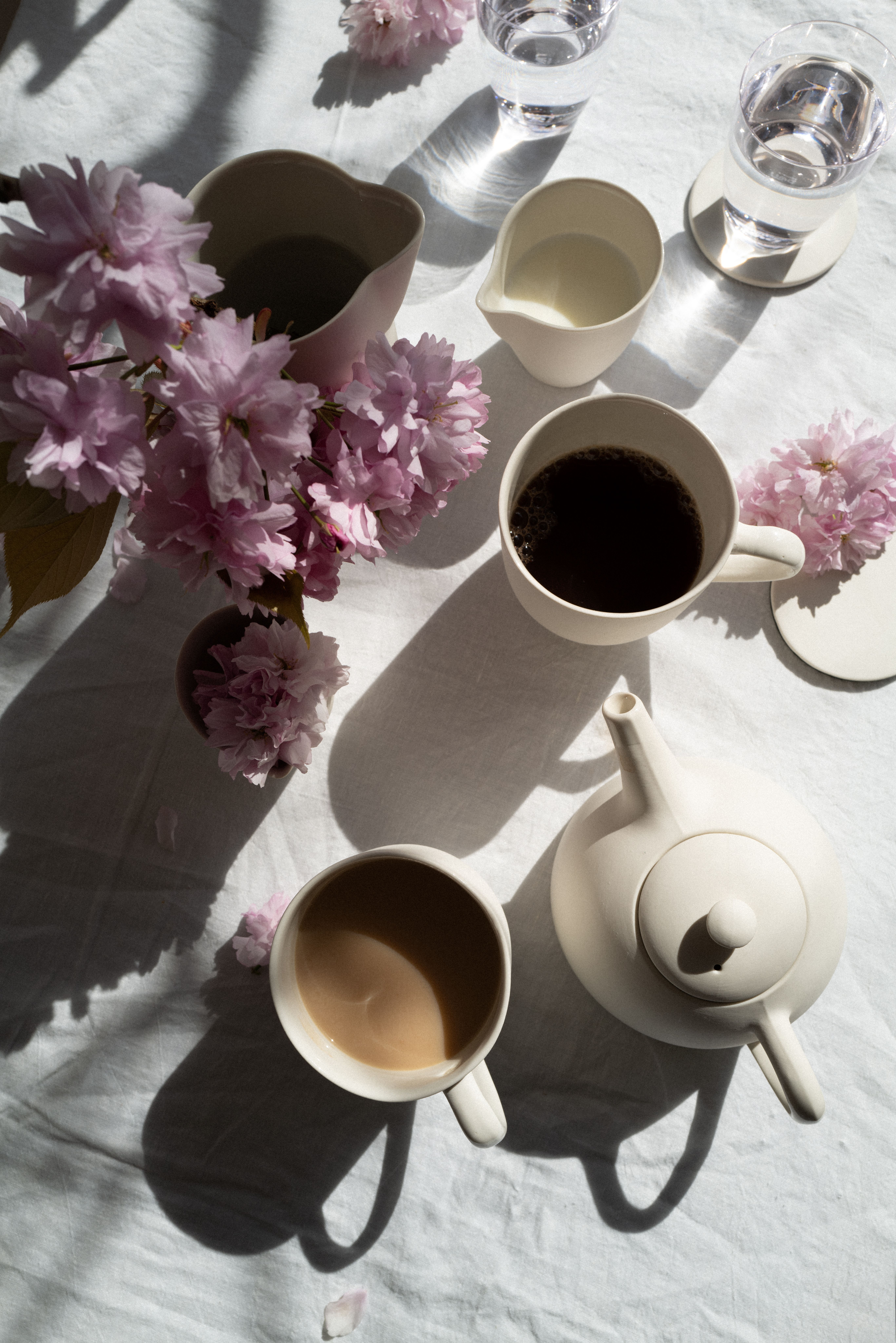Since 1994, Mud Australia has created elegant and timeless porcelain homewares. AU
The original Mud Australia store opened in Woollahra in 2007. Since then we’ve opened 12 stores globally.
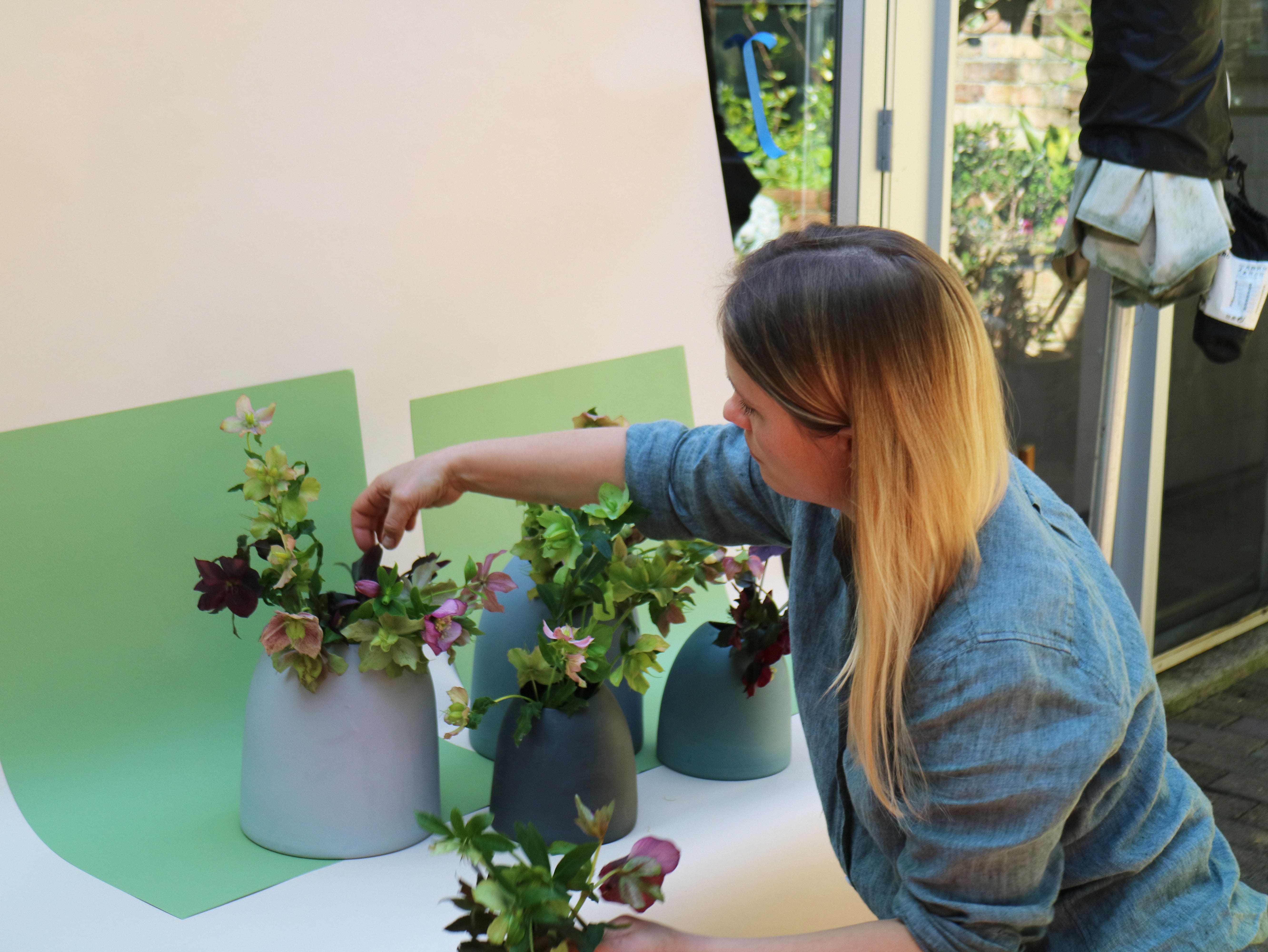
Fascinated by nature in all its wildness, floral stylist Sophia Kaplan uses locally grown cut flowers and potted plants along with unusual fruits and vegetables to create beautiful botanical sets.
For our latest Visual Essay, we asked Sophia to interpret Hive Vases’ new colours with a beautiful floral display — and at the same time provide some tips on preparing a perfectly understated seasonal floral arrangement.
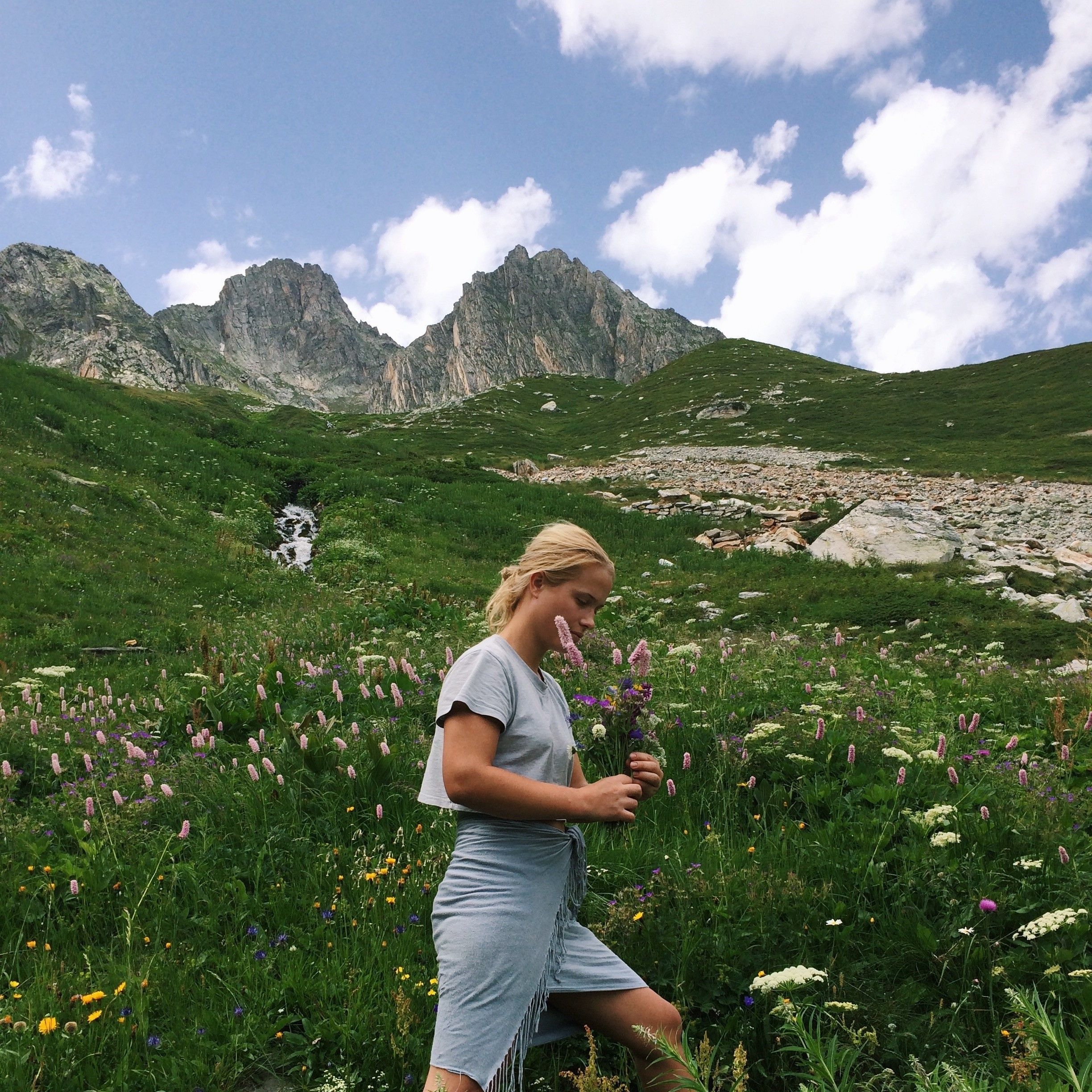
‘I’ve always loved being surrounded by nature and pottering around a good garden. I have vivid memories of spending hours picking little strawberries and pulling weeds in my Nonno’s backyard as a kid. But it wasn’t until years later, when I found myself forging alpine flowers while on holiday, that I had a bit of an epiphany. Sitting on the mountainside, marvelling at the beauty and abundance of these flowers, and the scene I found them in, I decided I wanted to make flowers a part of my life and career.”
I made a decision early in my career to only choose flowers that really sang to me — even if it fitted the colour brief or shape I was searching for. Without this special affection for the flower, I found it hard to arrange.
Another important factor when selecting flowers is choosing locally grown blooms. These flowers, which will grow in rhythm with the seasons, will always be fresher, less likely to be treated with chemicals and will have travelled far fewer miles to get to market. Some of my favourites of this time of year include bright blue cornflowers, shy hellebore, cymbidium orchids, ranunculus, sweet smelling sweet pea, magnificent magnolia, miniature pansies, violets, and lily of the valley, natives like wattle, grevillea, giant pink Waratahs, and paper daisies, brilliant weeping wisteria, and bulbs like daffs and muscari.
If you’re buying from a florist or farmers market, simply ask what has been grown locally and they will be able to point you in the right direction. Don’t forget to consider the size of the vase you are wanting to fill when choosing your final selection.
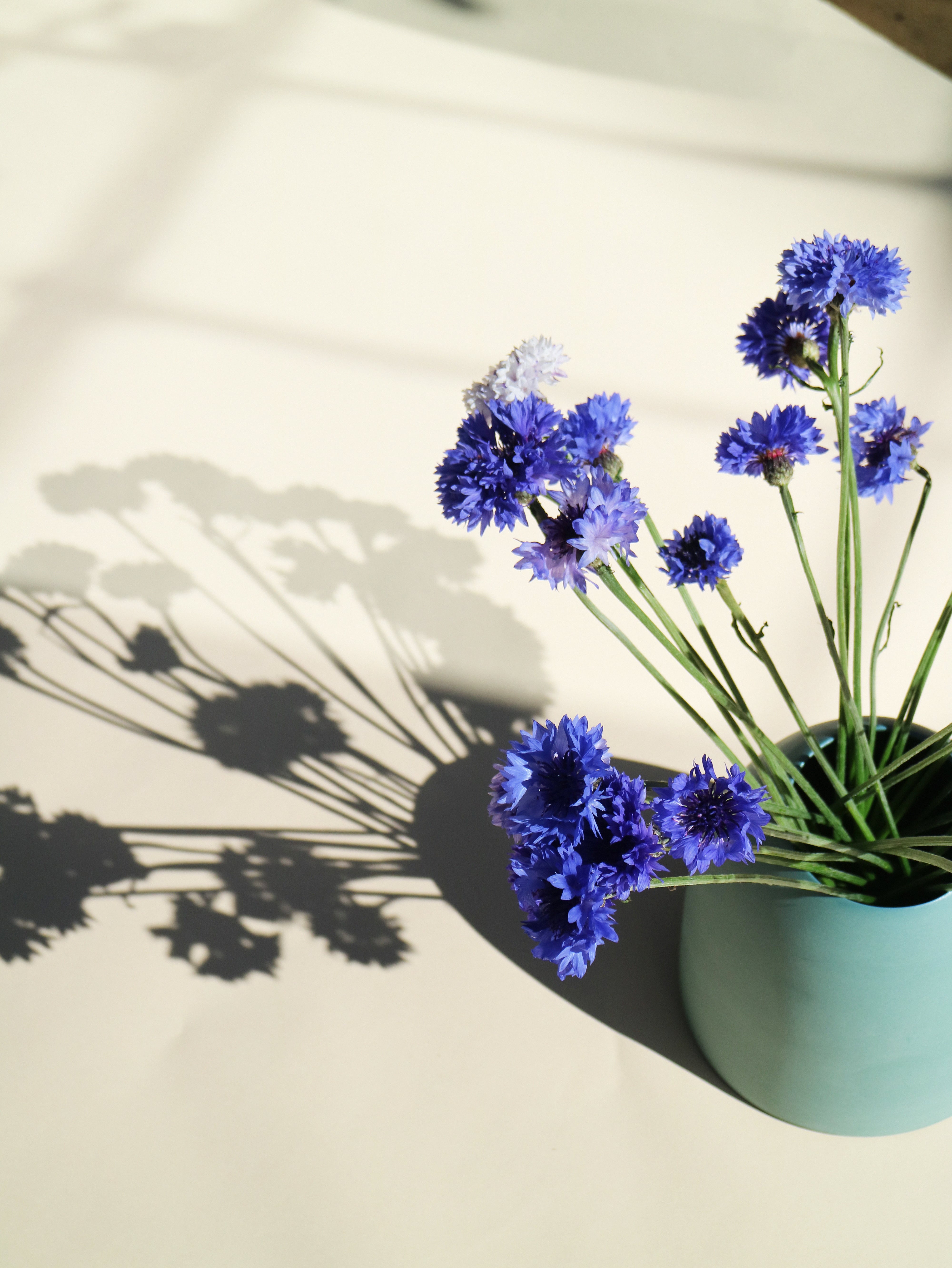
The shape of the Hive Vase is particularly pleasing. The smaller mouth, paired with the wider base makes arranging really quite easy. For some arrangements I have used hellebore at varying heights and made use of the curved mouth to allow some stems to drape downwards. For others I have allowed the shape of the vase to be highlighted with the simplicity of a few stems of cornflowers.
Once you’ve got your flowers home it’s time to process them. Remove any leaves that would otherwise sit below the water line, and recut the stem on the diagonal using clean, sharp secateurs. Quickly plunge the flowers into water, to allow them to re-hydrate.
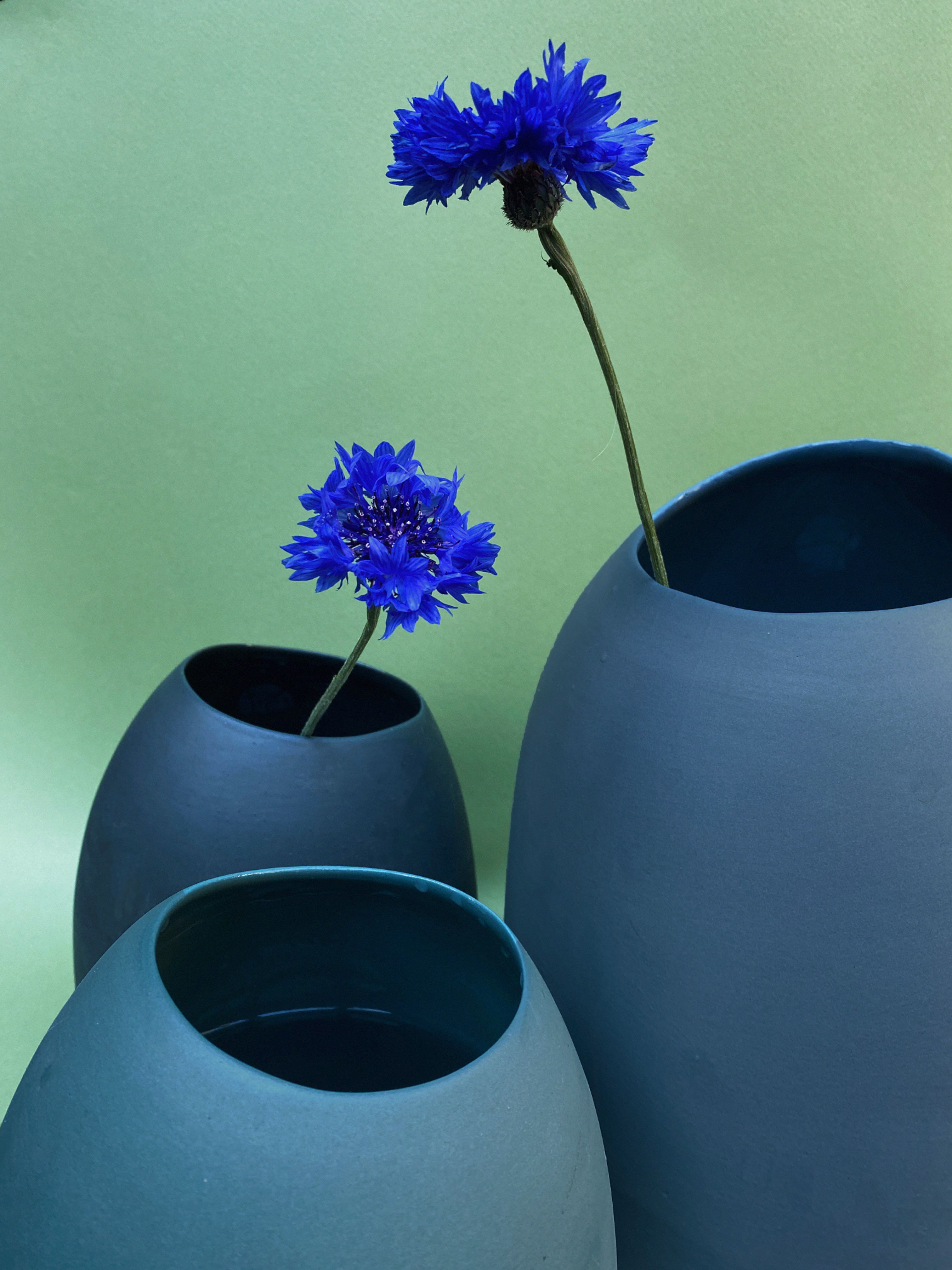
Sometimes less is more. Have a play, but don’t feel bad about removing stems that aren’t working or are cluttering the arrangement. Highlighting negative space can be really powerful. Just use the spare stems in another vase.
Most importantly, continue to learn and research. I draw inspiration by reading books about (or better yet, visiting them in person) famous garden designers like Piet Oudolf (landscape designer of The High Line in NY and the much lauded 2011 Serpentine Gallery courtyard), and the great gardens like Great Dixter in the UK is endlessly inspiring. And I really admire the work of many other creatives. Florists like Ruby of Mary Lennox in Berlin, Jardine Botanic in Sydney and Eliza of This Natural World in Tassie, and stylists, art directors and photographers like Stephanie Somebody Lauren Bamford, and Imogene Roche among many others.
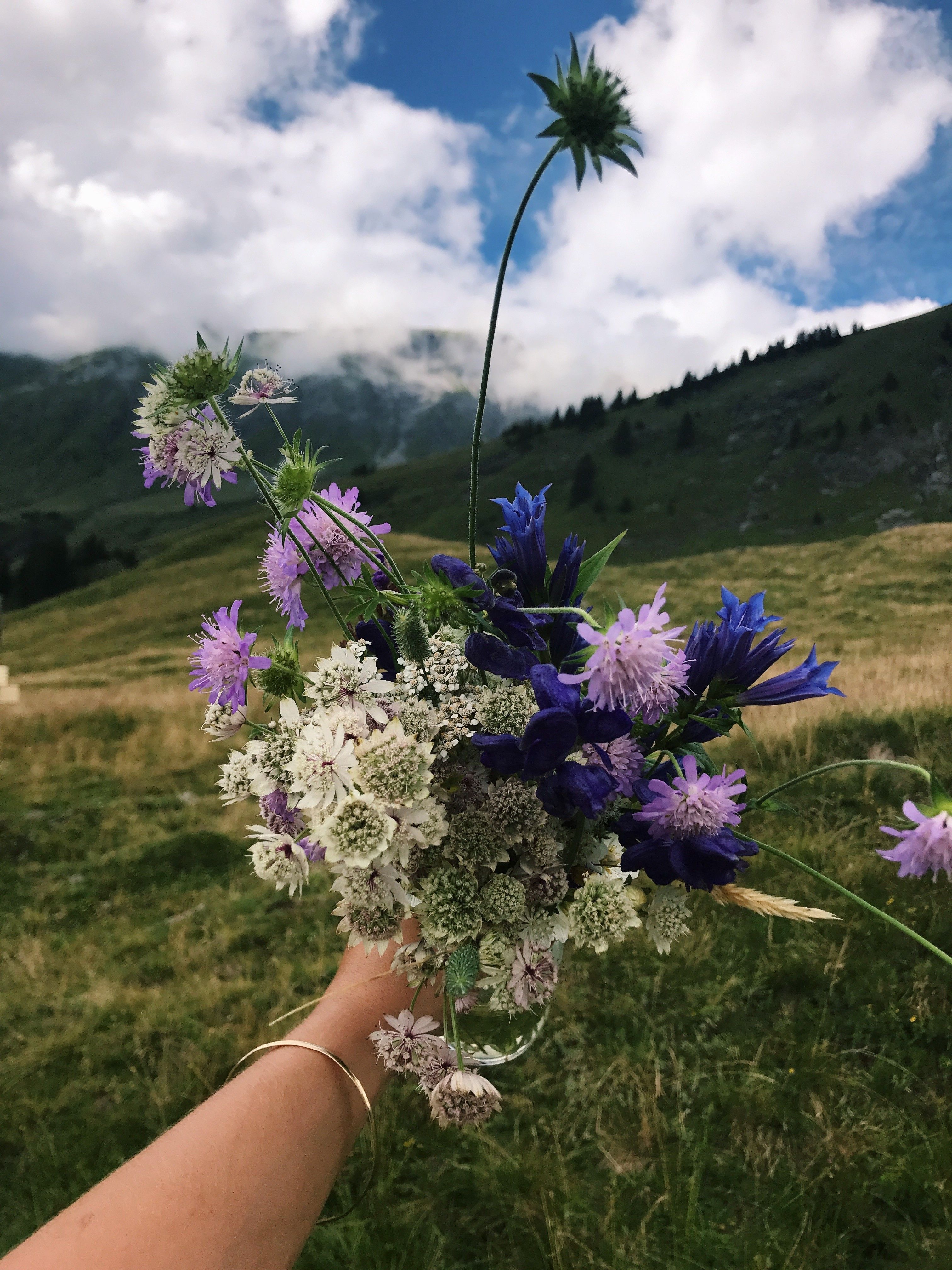
I also love visiting botanic gardens, farms, national parks, and being a voyeur of other people's gardens. Inspiration for arrangements can derive from finding little vignettes — whether it be pansies intermingling with strawberries and violets in my garden, or wind swept grassy dunes dotted with wild freesias on the island I’m currently visiting.
Shop Hive Vase - available in 2 sizes and 8 colours
Hive Vase Medium
USD 165.00
Available in 8 colors
Hive Vase Medium
USD 200.00
Available in 8 colors
Hive Vase Medium
USD 200.00
Available in 8 colors
Hive Vase Medium
USD 165.00
Available in 8 colors
Hive Vase Large
USD 265.00
Available in 8 colors
Hive Vase Large
USD 265.00
Available in 8 colors
Hive Vase Large
USD 265.00
Available in 8 colors
Hive Vase Large
USD 265.00
Available in 8 colors
